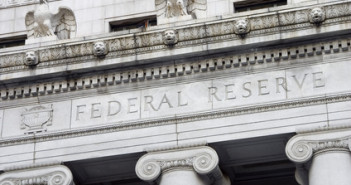Voices for a third round of Quantitative Easing have been heard since QE2 ended in June 2011. This process, in which the central banks prints money, had a critical impact on currencies: the dollar dropped during the QE2 period and rose after it expired. This was a choppy process but a very evident one.
Buying treasuries or mortgage based assets lowers yields and is supposed to encourage people to lend more from banks and stimulate the economy.
This analysis originally appears in the Forex Outlook for Q1 2012. You can download the full report for free by joining the mailing list in the form below.
Past QE
- QE1 Success: The first round of QE, from March 2009 may have helped in that manner: it stabilized the financial situation and allowed a first wave of recovery. QE2 already had a different purpose: prevent deflation. A situation where prices are falling discourages people to buy, as they are waiting for prices to further drop and this weighs on the economy.
- Lending Cannot Be Extended: QE2 succeeded in preventing deflation but didn’t encourage lending. Banks are still in the process of deleveraging and licking the wounds from the financial crisis. In order to maintain more balanced and less leveraged balance sheets, they lend less money, contrary to what led to the crisis. In addition, the Federal Funds Rate is almost at 0%, and will stay there for a long time, at least until mid-2013, according to the Federal Reserve. And still, lending is weak and will likely remain so.
- Commodity Inflation: QE2 also had problematic side effects: apart from pushing bonds higher (thus lower yields) it pushed up commodity prices – oil and food. So sure, deflation was prevented, but these high oil and food prices leave spare income for people to consume.
Why No QE
Yet there are still voices that support a third round of QE. Why?
- Doing Something: The Federal Reserve doesn’t want to show it is out of bullets. In addition, with the political deadlock in Washington, many look to the central bank for some decisive action.
- Tackling Mortgages: With government bond yields so low, the Fed can now move to lowering mortgage based assets and try to encourage people to recycle their mortgages. This has some logic in it, but it cannot happen with a push of a button: too many homeowners are “underwater” – with mortgages exceeding the current price of their homes. On the other side, banks might be reluctant to look into these assets, many of them being toxic.
- European problems: The last FOMC statements expressed concern about the situation in Europe, and it sometimes seemed that the Fed is looking for a reason to hit the QE3 button.
The composition of Federal Reserve voting members changes every year. Various researches have shown more monetary doves have a voting right in 2012.
But QE3 isn’t likely in Q1 2012. Why:
- Deflation not a threat: Oil prices remain elevated and with current tensions in the Middle East, they have more room to rise and push prices up.
- Employment is still rising: The Federal Reserve has a dual mandate of maintaining price stability and maximum employment. No significant deterioration employment is expected in Q1. Even we do see a downturn, the Fed will likely wait before acting – wait also with hints to after the first quarter.
- Doves not alone: The voting members in the FOMC are not alone. They are influenced by other members, some of them hawks that objected Operation Twist and the pledge for low rates until mid-2013. In addition, despite the call for “doing something”, there is growing opposition towards excessive monetary activism, especially with hopeful presidential candidate Ron Paul preaching to “end the Fed”.
The chances of QE3 that leans towards mortgage based assets exists, but this is likely a theme for the second quarter of 2012 rather than the first.
